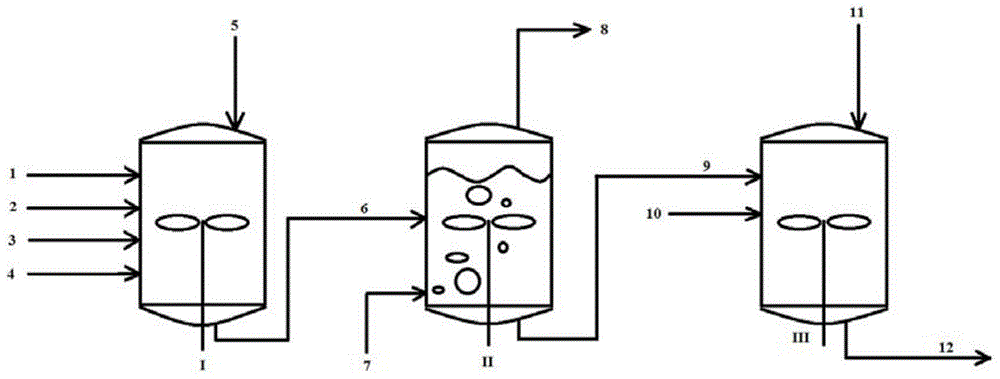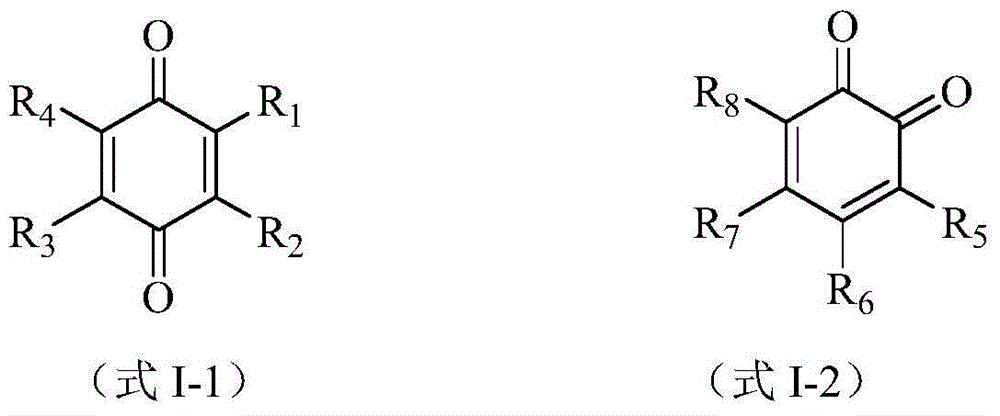Preparing method of halogenated polymer
A compound and copolymer technology, which is applied in the field of preparation of halogenated polymers, can solve the problems of high technical requirements for the preparation of aluminoxane, difficult and unsatisfactory preparation of the initiator system, etc., achieve high polymer yield and reduce energy Consumption, the effect of raising efficiency
- Summary
- Abstract
- Description
- Claims
- Application Information
AI Technical Summary
Problems solved by technology
Method used
Image
Examples
preparation example Construction
[0034] The invention provides a kind of preparation method of halogenated monoolefin-conjugated diene copolymer, the method comprises the following steps:
[0035] (1) Under cationic polymerization conditions, in at least one polymerization solvent, at least one monoolefin and at least one conjugated diene are contacted with each component in the initiator system to obtain monoolefin-conjugated diolefin A solution of an olefin copolymer, the polymerization solvent being selected from alkanes;
[0036] (2) removing unreacted monomers in the solution containing the monoolefin-conjugated diene copolymer to obtain a solution after monomer removal;
[0037] (3) The monomer-removed solution is contacted with a halogen-containing compound, so that part of the hydrogen atoms in the molecular chain of the monoolefin-conjugated diene copolymer are replaced by halogen atoms.
[0038] In the present invention, "optionally" means including or not including, and "at least one" means one or...
experiment example 1
[0108] (1) Dissolve 0.0662g of chloro-p-benzoquinone in 80g of dichloromethane solution containing HCl (concentration: 0.0036mol / L), pre-cool the resulting solution to -80°C, and then sequentially add 2.6 mL of n-hexane solution of 0.9 mol / L ethylaluminum dichloride (EADC) and 1 mL of n-heptane solution of 1.0 mol / L diethylaluminum chloride (DEAC), after mixing evenly, put The resulting mixed solution was aged at -80° C. for 80 min to obtain an initiator solution. Wherein, by weight, the content of chloro-p-benzoquinone in the initiator solution is 800ppm.
[0109] (2) Place a 250mL three-necked flask in a low-temperature cooling bath whose temperature is controlled from -80°C to -85°C, and add 85mL of n-hexane cooled to -80°C, 15mL of isobutylene cooled to -80°C and 0.5 mL of isoprene pre-cooled to -20°C was mixed uniformly to obtain a monomer solution. Add 10mL of the initiator solution prepared in step (1) to the monomer solution, mix evenly and let it stand for 30 minute...
experiment example 2
[0112] Adopt the same method as Experimental Example 1 to carry out the polymerization, the difference is that in step (2), during the dropwise addition of the initiator solution and the polymerization reaction, the temperature of the cold bath is controlled to be in the range of -40°C to -50°C Inside, the amount of initiator solution was 15mL, and the polymerization reaction time was 50min.
[0113] The weight of the obtained polymer was measured, the polymer yield was calculated, and the molecular weight, molecular weight distribution index and degree of unsaturation of the polymer were measured, and the results are listed in Table 1.
PUM
 Login to View More
Login to View More Abstract
Description
Claims
Application Information
 Login to View More
Login to View More - R&D
- Intellectual Property
- Life Sciences
- Materials
- Tech Scout
- Unparalleled Data Quality
- Higher Quality Content
- 60% Fewer Hallucinations
Browse by: Latest US Patents, China's latest patents, Technical Efficacy Thesaurus, Application Domain, Technology Topic, Popular Technical Reports.
© 2025 PatSnap. All rights reserved.Legal|Privacy policy|Modern Slavery Act Transparency Statement|Sitemap|About US| Contact US: help@patsnap.com



